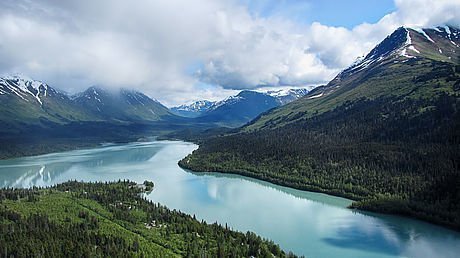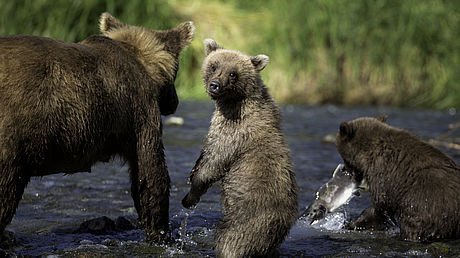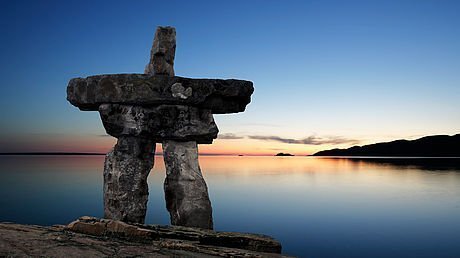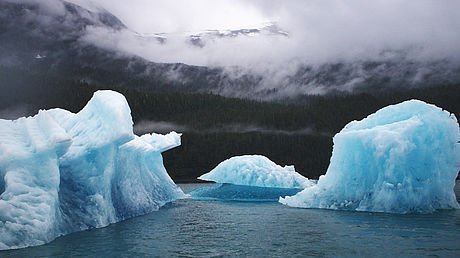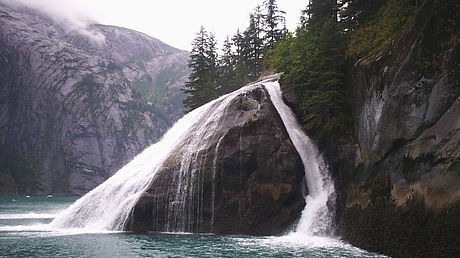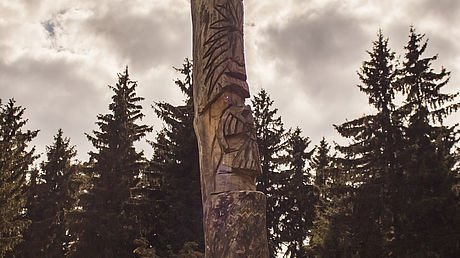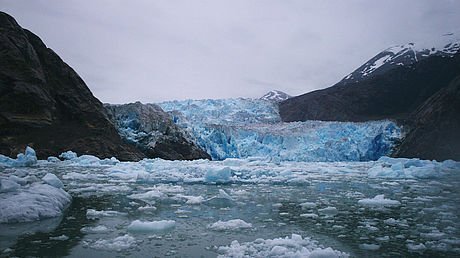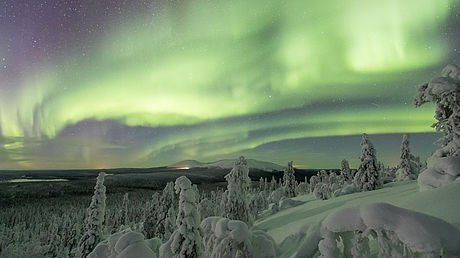Wild Alaska
Nature and home of the wild salmon
„Alyeska“ – „Big land“ is how the natives call their home because of the immense width and the untouched wilderness. Immerse yourself into the spectacular eternal landscapes of pristine nature.
More than three million lakes and ponds, more than three thousand rivers and mountain streams and a winding coastline of more than 55.000 km lenght shapes alaskas landscape. The expanse of the tundra, seemingly endless valleys and wild river courses contrast with the width of the gigantic mountain ranges, tight canyons and profound fjords. The clear, icy sea off alaskas coast belong to the
Alaska, home of the Youkon Wild Salmon
Alaska wild land is the natural paradise on earth. On an area five times bigger as Germany there are only living 700.000 inhabitants. About 300.000 of those live in one city and the rest are distributed over the country. With its low population (1 person per square-meter-mile) Alaska is a paradise for a unique wildlife. Endless expanses of tundra, wild river landscapes and one of the cleanest and most natural marine habitats of the world. Here lives our Youkon Wild Salmon.
The pure, natural taste of the wild catched YOUKON Salmon is originated in its nutritious and vital ecosytem of the uncontaminated seas and fresh-water-systems of Alaska. His delicious food consists mainly of prawns, crabs and small fish.
Alaskas pollack – short profile
Alaska pollack lives close to the ground in 30 to 400 metern depth. The young alaska pollack undertakes daily several tours between the seabed and the surface, especially at night it is hunting in the shallow waters. Alaska's pollack has a great similarity to the kabeljau and the codfisch. The body is strung-out and relatively small– around 80 cm long. The typical age of an alaska pollack is up to 15 years and it is extremly fertile:a female can lay up to 15 millionen eggs per year. It feeds on small animals that share his habitat like prawns, crabs or small fish. With three to four years the alaska pollack gets sexualy active.
Alaskas history and inhabitants
10.000 years ago the first settlers of Alaska crossed via the, in this time still connected by land, Bering Strait from Asia to Alaska They lived on whaling and hunting. Around 16 percent of the current population are descendants of those native inhabitants. At the end of the last Ice Age the sea level rose and 10.000 years ago the two continents which where connected by the Bering Strait where separated. The remaining people in this regions formed the native tribes, thousands of years before the europeans settled.
Over the centuries different and independant cultures developed. Four anthropological main groups settled in Alaska: Eskimos (Inuit), Aleuten, Athabascan and the indians of the south-west coast.The Inuits disseminated in the western region. The Aleuten settled mainly the islands, which now carry their name - The Aleuten. The two big indian tribes of the Tlingit and the Athabascan settled down in the south-east and in the center of Alaska. The Aleuten remain the home of the tribe of the Aleuten altough they where one of the first who have been exploit by the russians.
The russian sailors were the first to traverse the Bering Strait in the 17th century and reached Alaska in the 18th century. The result was violent conflicts with the resident Koniag-Eskimos. In the 19th century other adventurers set off to Alaska. Trappers plundered the woods and the first gold findings caused a real gold fever,
The selling of alaska
Alaska has been the only colony overseas of the rising world power russia but due to its location it has been hard to manage and marginally profitable. Since the passage through the icy seas had been too dangerous, the only way from the former capital Saint Petersburg was all across the country passing the Tschuktschenlake and took around half a year.
The russians had to cope with numerous difficulties: The fur animals, especially the sea otter
